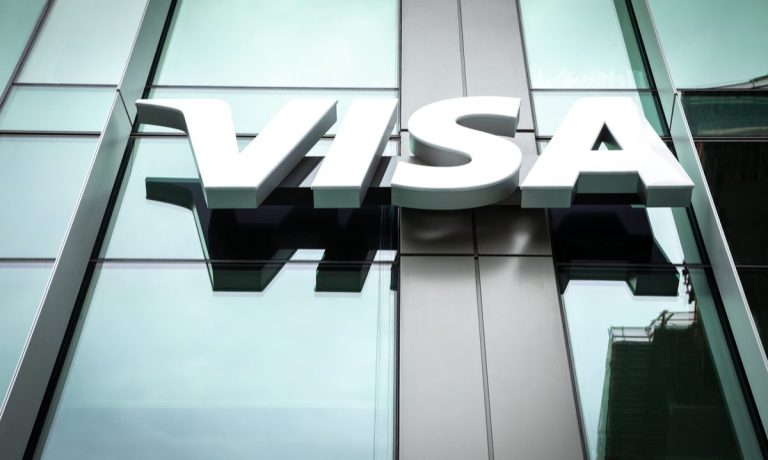Visa X-Border Payments Volumes Surge 38%

Visa’s latest earnings results, this time for its fiscal fourth quarter, showed continued rebounds in consumer spending, especially across borders, as economies reopened.
In terms of headline numbers, and performance against Street expectations, the company’s $1.62 per share earned in the quarter topped the $1.55 expected by analysts. Consolidated revenues of $6.6 billion were up 29% year on year and bested consensus of $6.5 billion.
Drilling into the supplemental materials that accompanied the announcement on Tuesday (Oct. 26), Visa said that total payments volume was up 17%, as measured in constant dollars, to a total of $2.6 trillion. Within that activity, credit volumes were up 18% in constant dollars, outpacing debit growth of 15%, to a respective $1.3 trillion and $1.4 trillion.
Total cross-border payments volumes, in constant dollars, gained 38%, the company said.
Total cards gained 7%, the company said, to 3.7 billion in the most recent quarter. Growth in debit cards outpaced credit cards, at 9% vs. 2%, to a respective 2.6 billion and 1.1 billion.
CEO Al Kelly noted on the call that strong results came against the “backdrop of economic uncertainty.” He said that fourth-quarter payments volume was 121% of 2019’s levels, despite the pandemic.
Cross-border volumes, he said, excluding Europe, was 86% of 2019.
He said that Visa remains even better positioned than it was before the pandemic to capitalize on the growth and potential of digital payments. In 2021, he said the number of monthly active eCommerce credentials and spend per active credential continued to grow, he said. In the U.S., those metrics both grew by more than 20% vs 2019. The credentials for established and new players came to 3.7 billion, up 7% in 2021 as measured year over year. In the past year, FinTechs issued 30% more credentials year over year and more than doubled their payments volume.
Merchant locations accepting Visa grew by more than 14% year over year to 80 million, said Kelly.
Tap to pay represented more than 70% of all face-to-face transactions, said Kelly, globally. Excluding the U.S., there are more than 70 countries where tap to pay represents a majority of transactions. U.S. tap to pay penetration has doubled from year-ago levels, said Kelly.
“We know from several markets that tapping brings increased spending,” said Kelly, “while digitizing cash.” The company doubled the number of tokens issued through the past year to 2.6 billion. Tokens have led to a 2.5% increase in approval rates and a 28% reduction in fraud rates, year over year, said Kelly.
He pointed to the “network of network” opportunities, where the total addressable market stands at $185 trillion. In the U.S., he said, roughly 120 million cards have sent or received funds using Visa Direct. Visa B2B Connect now operates in more than 100 markets, management said on the call.